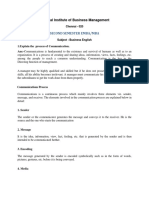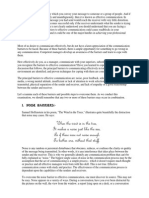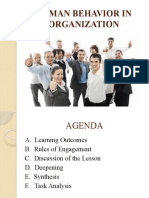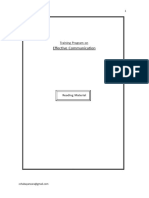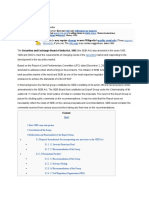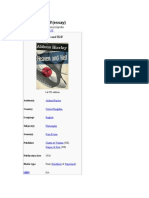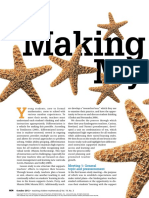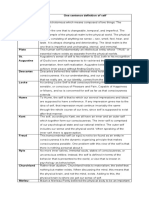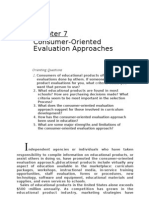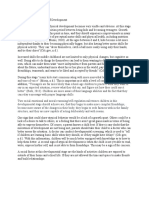IMPORTANCE OF
COMMUNICATION
BY:-
SKILLS
SIDHARTH NAGPAL
NEHA GUPTA
MANJARI
MINTI JAIN
NIKITA JAIN
�CONTENTS
DEFINITION
COMMUNICATION PROCESS
IMPORTANCE
CASE STUDY 1
BARRIERS
CASE STUDY 2
FEW TIPS
� WHAT DO WE
UNDERSTAND BY
‘COMMUNICATION’
�“Communication is the process of passing
information and understanding from one person
to another. It is the process of imparting ideas
and making oneself understood by others.”
�COMMUNICATION
PROCESS
�COMMUNICATION PROCESS
� IMPORTANCE OF
COMMUNICATION
�• Exchange of information
• Education
• Advice and counseling
• Persuasion
• Motivation and raising morale
• Warning
• Selection process
�CASE STUDY # 1
ON FORMAL COMMUNICATION
IN AN ORGANISATION
� Anwar Patel
MANAGER of the
MATA SHOE COMPANY
at Thana
�During one of his
vacations he done a
short course in
management and public
relations
�It then dawned upon him that all these years
he had been doing the wrong thing by dealing
only with the section heads under him.
COMMUNICATE
SECTION
HEADS
�On his return to the factory he was a new Mr.
Patel
� He began having his
lunch in the workers’
mess
� He even
exchanged a few
smutty jokes
�Over a cup of tea he told them
the story of his life and many
spicy episodes about the lives
of the directions – all in the
interest of better public
relations.
�He also joined them once in ragging a
foreman who wore an old fashioned
coat and hat
�Trouble started a few days
later
•Absenteeism increased
•There were three incidents of workers
refusing to carry out the orders of their
supervisors
�PROBLEMS AND ITS EFFECTS:
Manager was overfriendly with his subordinates. This
lead to the loss of respect of manager.
Manager used to exchange smutty jokes, discuss spicy
episodes about the Director’s life, ragging, etc. This all
show that there was no formal communication
between the Manager and his subordinates.
Since subordinates took the Manager for granted,
there were cases of subordinates refusing to carry out
the orders.
�PROBLEMS AND ITS EFFECTS:
Manager used to over communicate with the
employees. He used to talk unnecessary things.
All these show us that due to over communication
there can be disturbance in the smooth functioning of
the organization.
�
HOW TO OVERCOME?
Manager should have a limited communication.
Manager should not be so informal that he start
sharing jokes with his subordinates because this will
lead to loss of respect.
There has to be a formal communication between
manager and the subordinates.
A Manager should maintain the hierarchy in order to
strengthen the authority.
� BARRIERS IN
COMMUNICATION PROCESS
AND WAYS TO OVERCOME
THEM
�BARRIER # 1:MUDDLED MESSAGE
�Communication plays a major role in employer-employee relationships on farms. It also affects the relationships
among family members on the management team. Although effective communication does not guarantee success
of a farm business, its absence usually assures
problems. A communication problem may soon become a crisis or it may linger on for years.
More specifically, communication influences the effectiveness of the hiring and training of employees, motivation of
employees, providing daily instructions, performance evaluations and the handling of discipline problems. These
are the obvious roles of communication.
Communication also affects the willingness of employees to provide useful suggestions.
Employees feeling a part of the business requires communication. In fact, for employees to make the important
evolution from "workers" to "working managers" requires effective communication between supervisors and
BARRIER # 2: LENGTHY
employees.
Employees typically are hesitant to state their goals, their concerns and their disappointments. Of course, an
employee may be a complainer and share views to the point a supervisor silently begs for less "communication."
Much more common is the need to better
MESSAGE
understand what an employee is "really thinking."
This paper is about improving communication skills. Removing barriers to communication is one of the easiest ways
to improve communication. Removing these barriers starts with an understanding of a communication model.
This paper should help managers think
about their own communication skills and the way they communicate day-to-day back home.
the sending of a message by an appropriate channel to a receiver appears to have completed the communication
process or at least the sender's responsibility. Not so! After sending the message, the sender becomes a receiver
and the receiver becomes a sender through
the process of feedback. Feedback is the receiver's response to the attempt by the sender to send the message.
Feedback is the key to determination by the sender of whether or not the message has been received in the
intended form. Feedback involves choice of channel by the receiver of the original message. The channel for
feedback may be quite different from the original channel
chosen by the sender. A puzzled look may be the feedback to what the sender considered a perfectly clear oral
instruction.
�BARRIER # 3: LANGUAGE
BARRIER
� BARRIER # 4:
DIFFERENCE IN
ATTITUDE
�BARRIER # 5: PHYSICAL
BARRIERS
� CASE STUDY 2:
KNOW YOUR MESSAGE
�SCENARIO # 1
�SCENARIO # 2
�HERE ARE A FEW TIPS:-
THINK BEFORE YOU SPEAK
BE ACQUAINTED WITH YOUR MESSAGE
GET TO THE PONT QUICKLY
KNOW THE RESULTS YOU WANT FROM YOUR
DIALOGUES
PRACTICE THE POWER OF INFLUENCE
PROPER PLANNING IN ADVANCE IS ESSENTIAL TO
DELIVER RIGHT MEGGAGE










